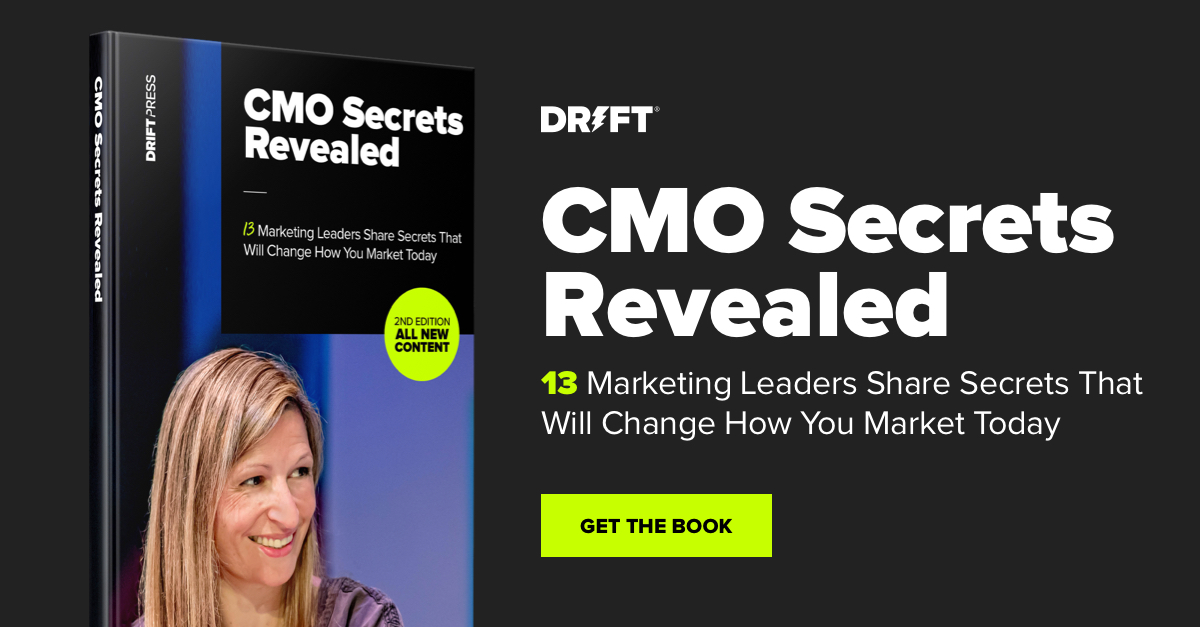Over the course of the pandemic, businesses have grown to rely on marketing to stand out from the crowd. That’s especially true for the financial services industry where, in 2020, digital ad spend increased by 9.7%, making up 14.6% of the total digital ad spend in the US.
A robust marketing strategy is critical to the success of financial service companies, and no one knows that better than Apex Group CMO Rosie Guest.
CMOs aren’t known to stick around for very long, but Rosie has spent the past seven years building the Apex marketing team from the ground up. She’s seen the company grow into one of the biggest asset management companies in the world through 21 acquisitions in just four years.
On a Drift podcast episode, Rosie walked us through the financial services industry: what it takes to be a commercially creative marketer in that space and how that helps establish marketing as a mission-critical role in the business.
Here are her four tips for becoming a successful marketer at a financial services company.
If you want to listen to the full podcast episode featuring Rosie Guest, click here. Otherwise, keep reading for all the insights💡
1. Prove You’re Adding to the Bottom Line
Numbers can speak louder than words. Especially when your team doesn’t have buy-in from senior leaders.
Traditionally, marketing teams at financial service companies have played second fiddle to sales, initiating campaigns at their request with little to no strategy. For Rosie, establishing the marketing function at Apex has largely been proving that it works.
In financial services, numbers talk, so the first thing I did was establish the demand funnel. And then from there, when you’re able to prove that you’re adding to the bottom line, you’re creating revenue, you get more investment.
With a sales cycle that lasts between six months and two years, financial service marketers need to take the big picture approach. This means looking at the entire buyer’s journey through the amount of pipeline influenced rather than pipeline sourced.
When you hone in on detailed touchpoints like site visits and ebook downloads, you get a true sense of the impact that marketing has on pipeline. It makes a world of difference when you’re able to say (as Apex does) that deal sizes are 50% bigger when marketing is involved.
Success in financial services happens when marketing and sales work together to drive up deal sizes and improve upselling to customers. And that all starts with the numbers. As Rosie puts it: “Make sure that you demonstrate the value of marketing before you try to do anything else.”
2. Use Content to Funnel Your Buyers to Sales
According to Invoca, 64% of calls to financial service providers come from organic search, and 34% come from paid search. As B2B buying becomes more digital, we marketers have to convince buyers that our product is worth their time.
To do this, Apex’s marketing team relies on a sophisticated content marketing strategy.
Where a lot of our successes come from in terms of product marketing…was about looking at content. For us, that’s where everything stems from because it’s how we demonstrate the value of our business.
With Apex’s many acquisitions, it’s hard for even sales to keep track of all their products. Rosie’s team uses content to educate both buyers and internal stakeholders, ensuring that the right product lands in front of the right buyer.
“The goal is always to funnel [buyers] to sales,” Rosie sums up. Apex’s marketing team performed a huge content audit to figure out how and when content was being used. From there, they personalized their content to fit specific value propositions and personas.
It’s a buying group for us, it’s never just one person. So the influence is not just about the person, it’s about all of the personas within that account.
Generic touches won’t work on your buyers. Whether you work in demand generation or content, your most powerful tool is segmentation and personalization. In the end, that’s what will drive your buyers further along the funnel towards sales.
3. Build Your Brand Around an Authentic Message
In 2019, Edelman reported that financial services was the most distrusted industry among the general population. To shake that image, marketers need to build a brand that fosters trust and appeals to buyers. Here’s how Rosie laid out the problem:
We have to be more than a service provider. It’s not enough anymore to just talk about services and say the same things everybody else is saying. You’ve got to have something more tangible to play with that’s got a bit of integrity behind it.
Thought leadership goes a long way: 59% of B2B decision-makers vet companies based on the timeliness and thoughtfulness of their brand’s messaging.
One of Apex’s biggest focuses has been sustainability. For example, they have partnered with Cricket West Indies to drive the team towards carbon neutrality using insights from their carbon footprint assessment. By linking its brand to sustainability initiatives, Apex builds trust with its buyers and stands out from its competitors.
Brand also impacts potential employees and investors. As Apex progressed from a mid-tier provider to a leader in financial services, the marketing team made it their priority to level up their reputation throughout the industry.
Measuring the success of your brand is hard. But, by continuing to send the right messages, you’ll find yourself booking bigger meetings and getting invited to events among the other big players. That’s when you will know that your brand is well-trusted.
4. Be Commercial (Not Just Creative)
To be successful as a marketer today, you need to focus on more than just your creative efforts. You have to think about your role as part of the business.
When Rosie started at Apex, one of her priorities was reorganizing the marketing budget.
I was like, this thing is all over the place, we need to strip this back and rearrange how we’re going to centralize the marketing budget and how we’re going to deal with that with finance.
Being commercial isn’t limited to budgeting, though. You want to take initiative and think critically about how marketing fits within your business. The goal, as Rosie points out, is to get people to take marketing more seriously.
If you take the initiative in those things, it really just solidifies that marketing — we have brains as well, commercial brains.
Through her budgeting efforts, Rosie successfully created a budget template that has been used by the other teams at Apex. By dedicating time to the commercial aspect of marketing, you show that marketers are reliable and flexible partners within the business. That way, your fellow teams will know that they can lean on you.
Final Thought
Between long sales cycles and complicated products, the financial services industry is a difficult place for buyers to navigate. In an increasingly digital world, marketers are crucial in helping buyers find the right solution for them.
Marketing doesn’t have to be second to sales. By applying these four tips, you can prove that the marketing team is an essential part of any financial services company, and (in due time) you’ll see the revenue rolling in.









